
Leitz Diavert Focusing Assembly
by Steven West, USA


The coarse focusing on my Diavert was very difficult to turn, so I decided to see if I could fix it.


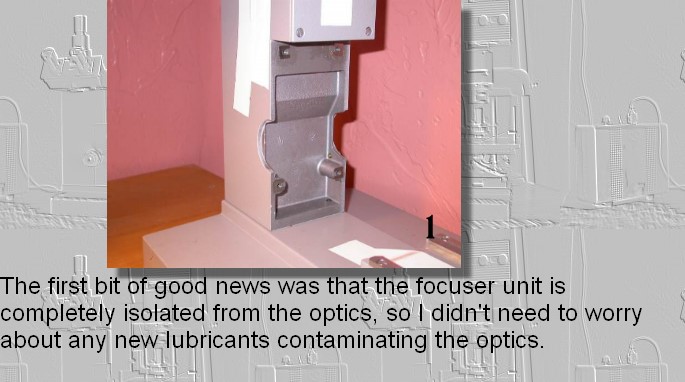


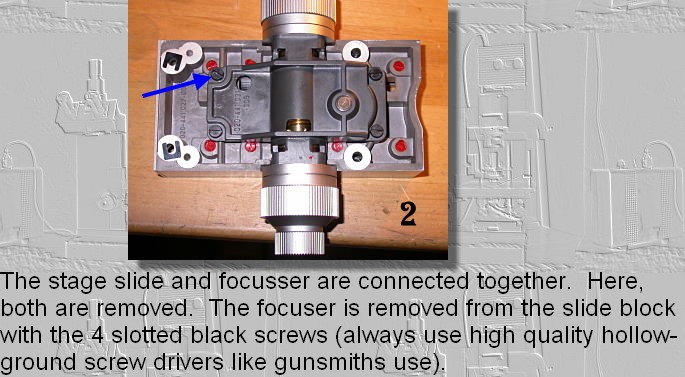


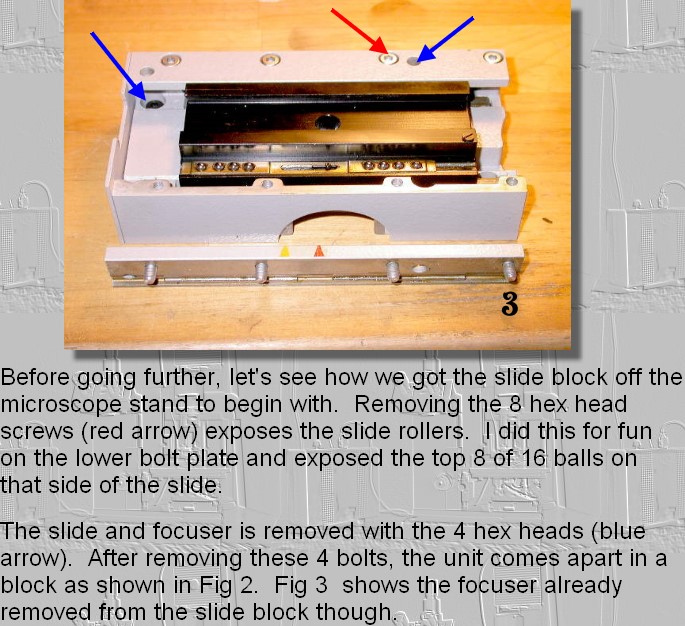



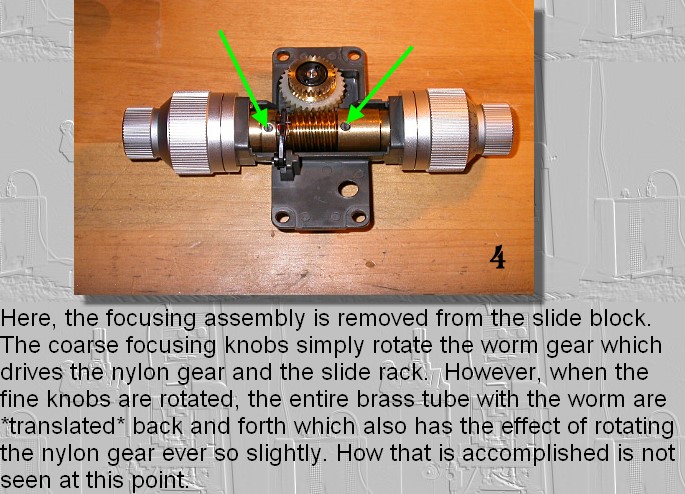




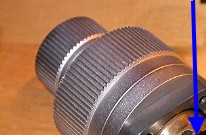
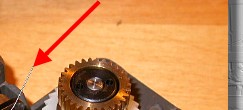



The coarse focus is limited to one full rotation by an arm (blue arrow) that engages a block (seen just under the arm with a bit of red paint). The spring (red arrow) preloads the arm against the brass tube when assembled.


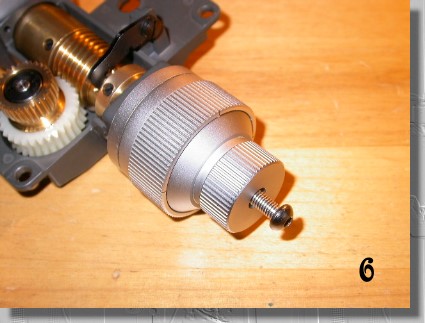

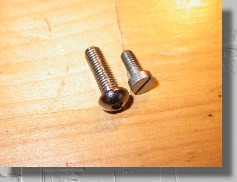



I was puzzled for quite some time about how to get the fine focussing knob detached until I realized that the knob itself had a thread for a larger diameter bolt (left bolt in right figure) than the one that holds the assembly together (right bolt). This suggested that the larger bolt was to be used a jack screw to remove the knob from a spur gear. That turned out to be correct!








The friction of each coarse focusing knob is set by the brass [jam] ring with the spanner slots (red arrows). Somehow, one of these "jam" nuts was severely overtightened which was responsible for the difficulty I had in adjusting coarse focus. However, I could not get this particular spanner ring loose!
I removed the coarse knob from the housing using the four bolts (blue arrows). However, you cannot pull it off because the knob is connected to the brass worm gear tube by flexures. You have to remove the green screws shown in Fig 4. Then the knob and brass end comes off the mount in one piece. The flexure can be removed at this point.
I still had the problem of loosening one of the spanner rings, and my spanner bent before it loosened. Out of desperation, I realized that putting the knob assembly into the freezer might make the aluminium shrink away from the brass. 2 hours in the freezer and the brass ring easily came off! I re-adjusted the friction and finished tightening the spanner ring. Now the coarse focuser worked very smoothly :)



Now, looking at Fig 4 again, we see that the entire brass tube assembly holding the worm gear is actually riding on bearings over a central shaft. That allows it to move right and left. It is not overconstrained because the flexures [connecting to the coarse knobs] are compliant in the right-left direction, but they are radially stiff for the coarse rotation.
The question is how is the worm shaft actually moved back and forth. I expected to find a micrometer screw, but I found something more clever that does not have any backlash.


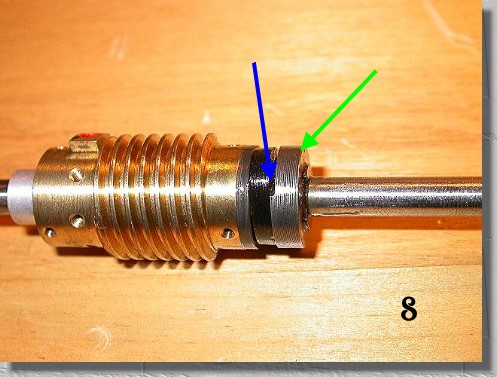


Fig 8 shows that the worm is loaded against a wedge-shaped ramp (green arrow). Between the ramp and worm end is a single ball bearing (blue arrow). As the fine focus knobs are turned, the ball rides around on the ramp and thus the worm gear is moved back and forth ever so slightly. The worm is loaded against the ball by the weight of the microscope mechanical stage and lamp support.



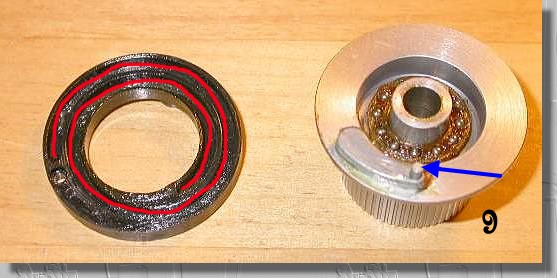


The rotation of the fine focus knobs is limited to about 1-3/4 turns. This is accomplished in one of the focusing knob assemblies by a hinged pin (blue arrow) riding in a helical track (outlined in red).


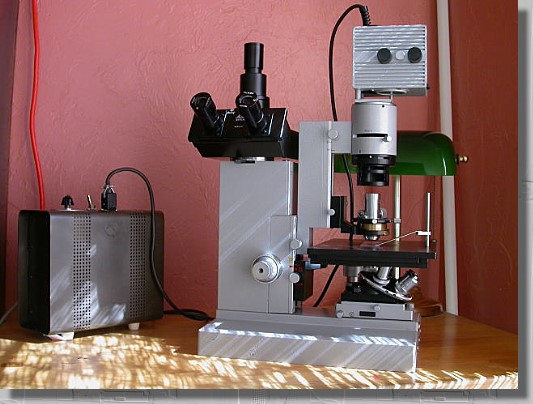


So the Diavert is back together and both the fine and coarse focussing work like new. It's shown here with a short working distance Heine condenser.
All comments to the author Steven West are welcomed.
Microscopy
UK Front Page
Micscape
Magazine
Article
Library
© Microscopy UK or their contributors.
Published in the January 2004 edition of Micscape.Please report any Web problems or offer general comments to the Micscape Editor.
Micscape is the on-line monthly magazine of the Microscopy
UK web
site at Microscopy-UK
© Onview.net Ltd, Microscopy-UK, and all contributors 1995 onwards. All rights reserved. Main site is at www.microscopy-uk.org.uk with full mirror at www.microscopy-uk.net.